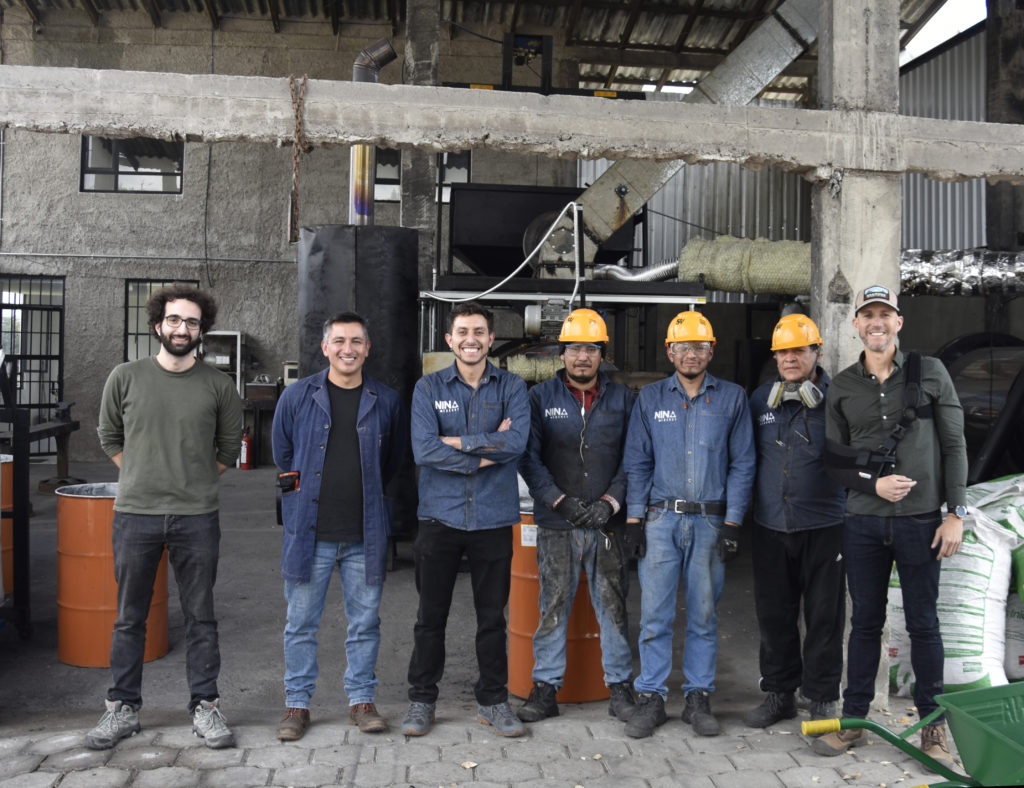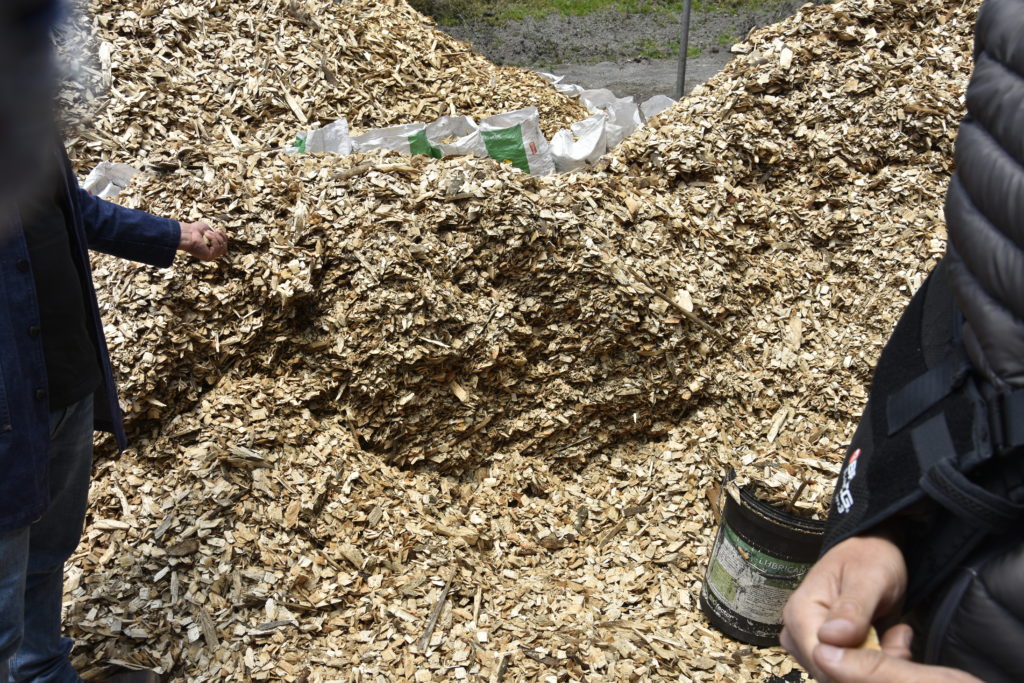Cotopaxi, Ecuador, November 2025. atmosfair biochar is now being produced in South America as well. To do this, we are launching a pyrolysis plant near Cotopaxi with our local partner company Nina Energy, an Ecuadorian technology provider and developer. This will convert wood waste from ecological forestry into biochar which will be used to improve the fertility of arable land and ensure a pathway towards negative emissions – an important tool for climate protection. At the same time, the project helps scaling up the local economy creating jobs and promoting such innovative technologies in Ecuador.

“Here in Cotopaxi, our first pilot plant is ready for operation. It aims to convert 900 tons of wood residues into biochar every year, finally giving the wood waste lying around after the wood harvest a purpose,” explains Andrés Novillo, founder and managing director of Nina Energy, having designed their own pyrolysis reactor technology. The plant, co-financed by atmosfair, aims to produce 300 tons of biochar annually from the 900 tons of residual biomass, which – when spread on fields – permanently binds 600 tons of CO₂ in the soil.
Residual biomass from environmental-friendly forestry
The pyrolysis plant uses residues from nearby forest plantation owned by Aglomerados Cotopaxi, located on the edge of the volcano with the same name. “This forest is located in the Andes at an altitude of over 3,000 metres. No rainforest can grow there, so the commercial forest does not displace valuable primary forest. Before the forest plantations, around 50 years ago, there was only depleted pastureland with low biodiversity here,” explains atmosfair project manager Francesc Grau. In addition, a quarter of Aglomerados Cotopaxi’s land is nature reserve for conservation purposes. The timber company does not use these 5,000 hectares for forestry and in cooperation with a local university, regularly monitors their biodiversity, preserving native vegetation and monitoring the water flows.

After a growth phase of around fifteen years, the trees are cut, and the wood is primarily used for furniture. After harvesting, cutting residues remain on the forest floor, which Aglomerados only partially uses to cover their energy requirements for wood processing. Until now, the rest is unused, kept rotting in the Andean highlands. atmosfair co-finances the collection of these residues from the forest floor and their transport to the pyrolysis plant. Tree stumps and particularly small residues remain in the forest and still rot there, providing the soil with sufficient nutrients to ensure sustainability.

Negative emissions and nutrients for arable soils
During pyrolysis, the waste is heated to temperatures above 650 degrees Celsius and a low oxygen atmosphere. This releases hot energy-rich gases from the wood, which we use to dry the harvest residues before they are used in the pyrolysis plant. After the process, a very stable form of carbon remains as biochar, which is afterwards enriched with nutrients and can have an abundance of benefits on the fields.
In Ecuador, farmers are using large quantities of industrially produced mineral fertilizers, production and use of which release greenhouse gases. Biochar-based fertilizers offer them an alternative to reduce the use of such fertilizers that is not only cheaper but also much more climate-friendly. Biochar binds carbon in the soil for the long term, which the trees have extracted from the CO₂ in the atmosphere during their growth.



 Share
Share Tweet
Tweet